什么是面向对象
![]()
![]()
回顾方法的定义与调用
方法的定义
![]()
import java.io.IOException;
//Demo01 类
public class Demo01 {
//main方法
public static void main(String[] args) {
}
public String sayHello(){
return "helloWorld";
}
public void readFile(String file) throws IOException{
}
}
方法的调用
public class Demo02 {
public static void main(String[] args) {
//非静态方法这样
new Student().say();
//或者
Student student=new Student();
student.say();
}
//static 的方法是和类一起加载的,存在较早
public static void a(){
// b(); //这里会报错,不能调用!!!!!!!
}
//类实例化之后才存在
public void b(){
}
}
//值传递
public class Demo03 {
public static void main(String[] args) {
int a=1;
System.out.println(a);//1
change(a);
System.out.println(a);//1
}
//返回值为空
public static void change(int a){
a=10;
}
}
//引用传递: 传递的对象,本质还是值传递
//对象要理解透彻、内存要理解透彻!!!!!!!!
public class Demo04 {
public static void main(String[] args) {
Person person = new Person();
System.out.println(person.name);//null
change(person);
System.out.println(person.name);//wda
}
public static void change(Person person){
//person 是一个对象:指向的--》Person person = new Person(); 这是一个具体的人可以改变属性
person.name ="wda";
}
}
//定义了一个Person类,有一个属性
class Person{
String name;//null
}
类与对象的创建
![]()
![]()
public class Student {
//属性;字段
String name;//null
int age;//0
//方法
public void study(){
System.out.println(this.name+"在学习");
}
}
/*
public static void main(String[] args) {
//类:抽象的,需要实例化
//类实例化后会返回一个自己的对象!
Student xiaoming = new Student();
Student xiaohong = new Student();
xiaoming.age=3;
xiaoming.name="ming";
System.out.println(xiaoming.name);
System.out.println(xiaoming.age);
}
*/
构造器详解
package com.oop.demo02;
//java-->会生成一个class文件
public class Person {
//一个类即使什么都不写,也会存在一个方法
//显式的定义构造器
String name;
int age;
//构造器的功能
//实例化初始值
//1.使用new关键字,本质是在调用构造器
//2.用来初始化值
public Person(){
this.name="safa";
}
//有参构造器:一旦定义了有参构造,无参就必须显式定义
public Person(String name){
this.name=name;
}
//alt+ insert 快捷定义构造器
}
/*
public static void main(String[] args) {
//new 实例化了一个对象
Person person = new Person("aaa");
System.out.println(person.name); //aaa
}
构造器:
1.和类名相同
2.没有返回值
作用:
1.使用new关键字,本质是在调用构造器
2.用来初始化值
注意点:
1.一旦定义了有参构造,如果想使用无参构造,无参就必须显式定义
alt+ insert 快捷定义构造器
this.=
*/
创建对象内存分析
package com.oop.demo03;
public class Pet {
public String name;
public int age;
//无参构造
public void shout(){
System.out.println("叫了一声");;
}
}
/*
public static void main(String[] args) {
Pet dog = new Pet();
dog.name="wangcai";
dog.age=3;
dog.shout();
System.out.println(dog.name);
System.out.println(dog.age);
Pet cat = new Pet();
}
*/
![]()
![]()
![]()
![]()
![]()
![]()
封装详解
![]()
package com.oop.demo04;
//private 私有
public class Student {
//封装大多数时候是对属性来说的,方法里面用的比较少
/*
1.提高程序的安全性
2.隐藏代码的实现细节
3.统一接口
4.系统可维护性增加了
*/
// 名字
//属性私有
private String name;
//学号
private int id;
//性别
private char sex;
//年龄
private int age;
//提供一些可以操作这个属性的方法
//提供一些pubLicde的get、set方法
//get 获得这个数据
public String getName(){
return this.name;
}
//set 给这个数据设置值
public void setName(String name){
this.name=name;
}
public int getAge() {
return age;
}
public void setAge(int age) {
if(age>120||age<0){
this.age = 3;
}else {
this.age=age;
}
}
//学习()
//睡觉()
}
/*
public static void main(String[] args) {
Student s1 =new Student();
// s1.name 会报错
s1.setName("sfa");
s1.getName();
//alt + insert 可以智能生成get set!!!!!!!!!!
s1.setAge(999);//不合法的
System.out.println(s1.getAge());
}
*/
继承
![]()
基础
package com.oop;
import com.oop.demo05.Student;
public class Application {
public static void main(String[] args) {
Student student =new Student();
student.say();
System.out.println(student.money);
//System.out.println(student.money_private);
//报错,说明父类私有的属性不能继承
}
}
package com.oop.demo05;
//在Java中,所有的类,都默认直接或间接继承object类
//人 父类
public class Person /*extends Object*/{
//public
//protected
//default
//private
public int money =10_0000_0000;
private int money_private=10;
public void say(){
System.out.println("说了一句话");
}
}
package com.oop.demo05;
//学生 is 人 派生类
//子类继承了父类,就会拥有父类的全部方法!!!
public class Student extends Person{
//ctrl+h 打开继承树!!!!!!
}
package com.oop.demo05;
//Teacher is Person 派生类
public class Teacher extends Person{
}
super详解
package com.oop;
import com.oop.demo05.Student;
public class Application {
public static void main(String[] args) {
Student student =new Student();
//Person无参构造执行了
//Student 无参执行了
//student.test("aa");
student.test1();
}
}
package com.oop.demo05;
//在Java中,所有的类,都默认直接或间接继承object类
//人 父类
public class Person /*extends Object*/{
//public
//protected
//default
//private
public int money =10_0000_0000;
private int money_private=10;
protected String name="ks";
//public-->private则出错,私有的东西无法继承
public void print(){
System.out.println("person");
}
public void say(){
System.out.println("说了一句话");
}
public Person() {
System.out.println("Person无参构造执行了");
}
}
package com.oop.demo05;
//学生 is 人 派生类
//子类继承了父类,就会拥有父类的全部方法!!!
public class Student extends Person{
//ctrl+h 打开继承树!!!!!!
private String name="qj";
public void test(String name){
System.out.println(name);//aa
System.out.println(this.name);//qj
System.out.println(super.name);//ks
}
public void print(){
System.out.println("Student");
}
public void test1(){
print();//Student
this.print();//Student
super.print();//person
}
public Student() {
//隐藏代码,默认调用了父类的无参构造!!!!!!!!!!
super();//调用父类的构造器,必须要在子类构造器第一行
System.out.println("Student 无参执行了");
}
}
super注意点:
1.super调用父类的构造方法,必须在构造方法的第一行
2.super必须只能出现在子类的方法或者构造方法中!
3.super和this不能同时调用构造方法
vs this:
代表的对象不同:
this:本身调用者这个对象
super:代表父类对象的应用
前提:
this:没有继承也可以使用
super:只能在继承条件才可以使用
构造方法
this();本类的构造
super();父类的构造
方法重写
package com.oop.demo05;
//继承
public class A extends B{
@Override //注解:有功能的注释
public void test() {
System.out.println("A->test()");
}
}
package com.oop.demo05;
//重写都是方法的重写,和属性无关
public class B {
public void test(){
System.out.println("B->test()");
}
}
package com.oop;
import com.oop.demo05.A;
import com.oop.demo05.B;
public class Application {
public static void main(String[] args) {
//静态的方法和非静态的方法区别很大
//静态方法:方法的调用只和左边,定义的数据类型有关
//只有非静态才叫做重写 ,private也不可以,只有public才可以
A a=new A();
a.test();
//父类的引用指向了子类
B b=new A();//子类重写了父类的方法
b.test();
//test()方法都有static时
//A->test()
//B->test()
//静态的方法和非静态的方法区别很大
//去掉static,即重写之后
//A->test()
//A->test()
}
}
重写:需要有继承关系,子类重写父类的方法!
1.方法名必须相同
2.参数列表必须相同
3.修饰符:范围可以扩大:public>protected>default>private
4.抛出的异常:范围,可以被缩小,但不能扩大;classNotFoundException(xiao)-- Exception(da)是不可以的
重写,子类的方法和父类必须要一致,方法体不同
为什么需要重写:
1.父类的功能,子类不一定需要,或者不一定满足!
快捷键: Alt+insert :override!!!!!!
多态
什么是多态
![]()
package com.oop;
import com.oop.demo06.Person;
import com.oop.demo06.Student;
public class Application {
public static void main(String[] args) {
//一个对象的实际类型是确定的
//new Student();
//new Person();
//可以指向的引用类型就不确定了: 父类的引用指向子类
//Student 能调用的方法都是自己的或者继承父类的
Student s1 = new Student();
//Person 父类型。可以指向子类,但是不能调用子类独有的方法
Person s2 = new Student();
Object s3 =new Student();
s2.run();//son 子类重写了父类的方法,执行子类的方法
s1.run();//son
//对象能执行哪些方法,主要看对象左边的类型,和右边关系不大
// s2.eat(); 报错
((Student)s2).eat();
s1.eat();//eat
}
}
package com.oop.demo06;
public class Student extends Person{
@Override
public void run() {
System.out.println("son");
}
public void eat(){
System.out.println("eat");
}
}
/*
多态注意事项:!!!!!!!!!!!!!
1.多态是方法的多态,属性没有多态
2.父类和子类,有联系 否则有类型转换异常 ClassCastException
3.存在条件:继承关系,方法需要重写,父类引用指向子类对象 Father f1= new Son();
1.static 方法,属于类,它不属于实例
2.final 常量,不可以改变
3.private 方法,私有的不能重写
*/
package com.oop.demo06;
public class Person {
public void run(){
System.out.println("run");
}
}
instanceof 和类型转换
package com.oop;
import com.oop.demo06.Person;
import com.oop.demo06.Student;
import com.oop.demo06.Teacher;
public class Application {
public static void main(String[] args) {
//类型之间的转换:父 子
//高 低
Person obj=new Student();
//student 将这个对象转换为Student类型,就可以使用Student类型的方法了!
((Student) obj).go();
//子类转换为父类,可能丢失自己的本来的一些方法!
Student student = new Student();
student.go();
Person person=student;
//person.go();//报错
}
}
/*
1.父类引用指向子类的对象
2.把子类转换为父类,向上转型:
3.把父类转换为子类,向下转型:强制转换
4.方便方法的调用,减少重复的代码!简洁!
抽象:封装、继承、多态! 抽象类,接口
*/
package com.oop.demo06;
public class Person {
public void run(){
System.out.println("run");
}
}
package com.oop.demo06;
public class Student extends Person{
public void go(){
System.out.println("go");
}
}
/*
//System.out.println(X instanceof Y);//能不能编译通过取决于是否有父子关系
//Object>String
//Object>Person>Teacher
//Object>Person>Student
Object object = new Student();
System.out.println(object instanceof Student);//true
System.out.println(object instanceof Person);//true
System.out.println(object instanceof Object);//true
System.out.println(object instanceof Teacher);//false
System.out.println(object instanceof String);//false
System.out.println("=============================");
Person person =new Student();
System.out.println(person instanceof Student);//true
System.out.println(person instanceof Person);//true
System.out.println(person instanceof Object);//true
System.out.println(person instanceof Teacher);//false
//System.out.println(person instanceof String);//编译报错
System.out.println("=============================");
Student student =new Student();
System.out.println(student instanceof Student);//true
System.out.println(student instanceof Person);//true
System.out.println(student instanceof Object);//true
//System.out.println(student instanceof Teacher);//编译报错
//System.out.println(student instanceof String);//编译报错
*/
package com.oop.demo06;
public class Teacher extends Person{
}
static关键字
package com.oop.demo07;
public class Student {
private static int age;//静态变量 多线程中会仔细说到
private double score;//非静态变量
public void run(){
}
public static void go(){
}
public static void main(String[] args) {
Student s1 = new Student();
System.out.println(Student.age);//建议通过这种类型来访问静态变量,静态的变量对于类而言在内存中只有一个,可以被类中所有实例共享
// System.out.println(Student.score);//报错
System.out.println(s1.age);
System.out.println(s1.score);
// Student.run();//报错
new Student().run();
Student.go();
go();//类中的的方法可以直接访问类中的静态方法
}
}
package com.oop.demo07;
public final class Person {
//被final修饰的类不能被继承
{
//匿名代码块
//程序执行时不能主动调用这个代码块
//创建对象时自动创建,而且在构造器之前
//可以用来赋初值
System.out.println("匿名代码块");
}
static{
//静态代码块
//类一加载就直接执行
//永久执行一次
System.out.println("静态代码块");
}
public Person() {
System.out.println("构造方法");
}
public static void main(String[] args) {
Person person1=new Person();
System.out.println("==============");
Person person2=new Person();
/*
静态代码块
匿名代码块
构造方法
==============
匿名代码块
构造方法
*/
}
}
package com.oop.demo07;
//静态导入包
import static java.lang.Math.random;
import static java.lang.Math.PI;
public class Test {
public static void main(String[] args) {
System.out.println(random());
System.out.println(PI);
}
}
抽象类
![]()
package com.oop.demo08;
//抽象类 extends: 单继承~ (接口可以实现多继承)例如插座~
public abstract class Action {
//约束~有人帮我们实现
//抽象方法,只有方法名字,没有方法的实现
public abstract void doSomeThing();
//1.不能new这个抽象类,只能靠子类去实现它;约束!
//2.抽象类中可以写普通方法
//3.抽象方法必须在抽象类中
//抽象的抽象:约束
//思考题 不能new,存在构造器吗? 存在!!!!↓↓↓↓↓↓↓↓
//存在的意义是什么 抽象出来 提高开发效率
public Action() {
}
}
//抽象类的所有方法,继承了它的子类,都必须实现这些方法~除非~它也是抽象类
public class A extends Action{
@Override
public void doSomeThing() {
}
}
接口的定义与实现
![]()
package com.oop.demo09;
//抽象的思维~Java 架构师~
//interface 定义的关键字,接口都需要有实现类
public interface UserService {
//接口中的所有定义的方法其实都是抽象的 默认为public abstract
//属性都是常量 默认 public static final
int AGE=99;
void add(String name);
void delete(String name);
void uodate(String name);
void query(String name);
}
package com.oop.demo09;
public interface TimeService {
void timer();
}
package com.oop.demo09;
//抽象类:extends
//类可以实现接口
//实现了接口的类,就需要重写接口中的方法
//多继承,利用接口实现多继承
public class UserServiceImpl implements UserService,TimeService{
@Override
public void add(String name) {
}
@Override
public void delete(String name) {
}
@Override
public void uodate(String name) {
}
@Override
public void query(String name) {
}
@Override
public void timer() {
}
}
作用:
1.约束
2.定义一些方法,让不同的人实现~ 10----》1
3.方法都是 public abstract
4.属性都是 public static final
5.接口不可以实例化~,接口中没有构造方法
6.implements可以实现多个接口
7.必须重写接口中的方法~
内部类
![]()
package com.oop;
import com.oop.demo10.Outer;
public class Application {
public static void main(String[] args) {
Outer outer = new Outer();
//通过这个外部类来实例化内部类
Outer.Inner inner = outer.new Inner();
inner.getID();//10
}
}
package com.oop.demo10;
public class Outer {
private int id=10;
public void out(){
System.out.println("这是外部类的方法");
//局部内部类
class Inner{
public void in(){
}
}
}
public class Inner{
public void in(){
System.out.println("这是内部类的方法");
}
//获得外部类的私有属性~
public void getID(){
System.out.println(id);
}
}
//静态内部类
public static class Inner2{
public void in(){
System.out.println("这是内部类的方法");
}
//不能获得外部类的属性
public void getID(){
// System.out.println(id);//报错
}
}
}
//一个Java类中可以由多个class类,但是只能由public class
class A{
}
package com.oop.demo10;
public class Test {
public static void main(String[] args) {
Apple apple = new Apple();
//没有名字初始化类,不用将实例保存在变量中
new Apple().eat();
//没有名字初始化接口
new UserService(){
@Override
public void hello() {
}
};
}
}
class Apple{
public void eat(){
System.out.println("1");
}
}
interface UserService{
void hello();
}

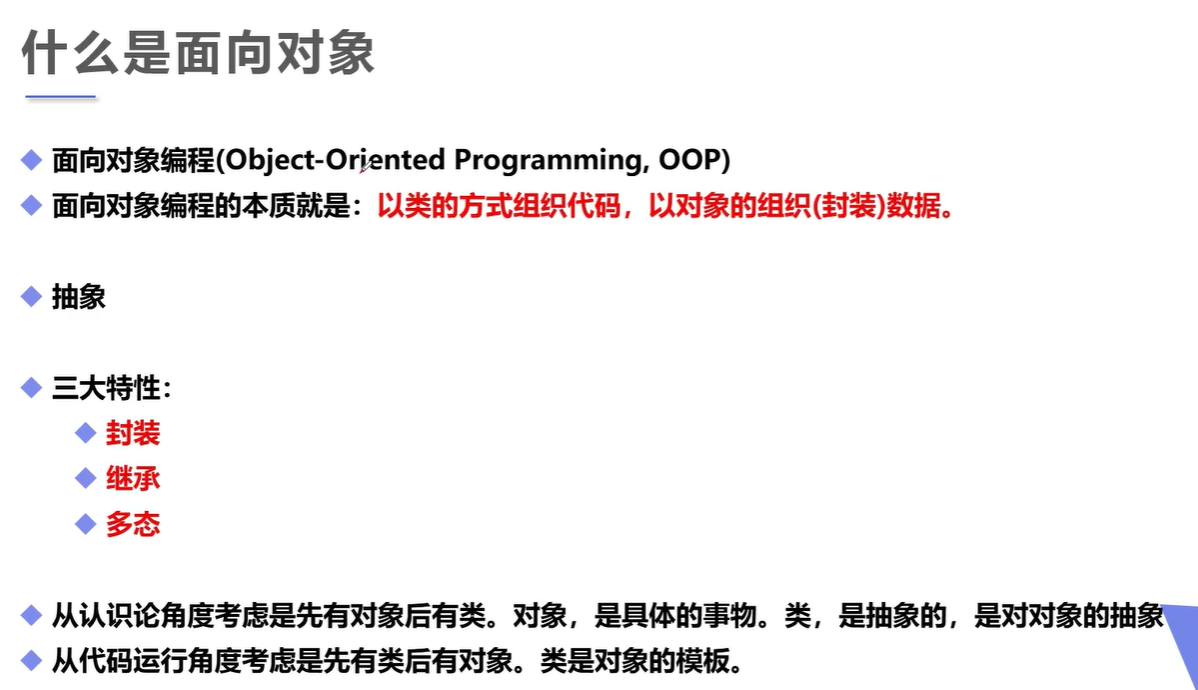

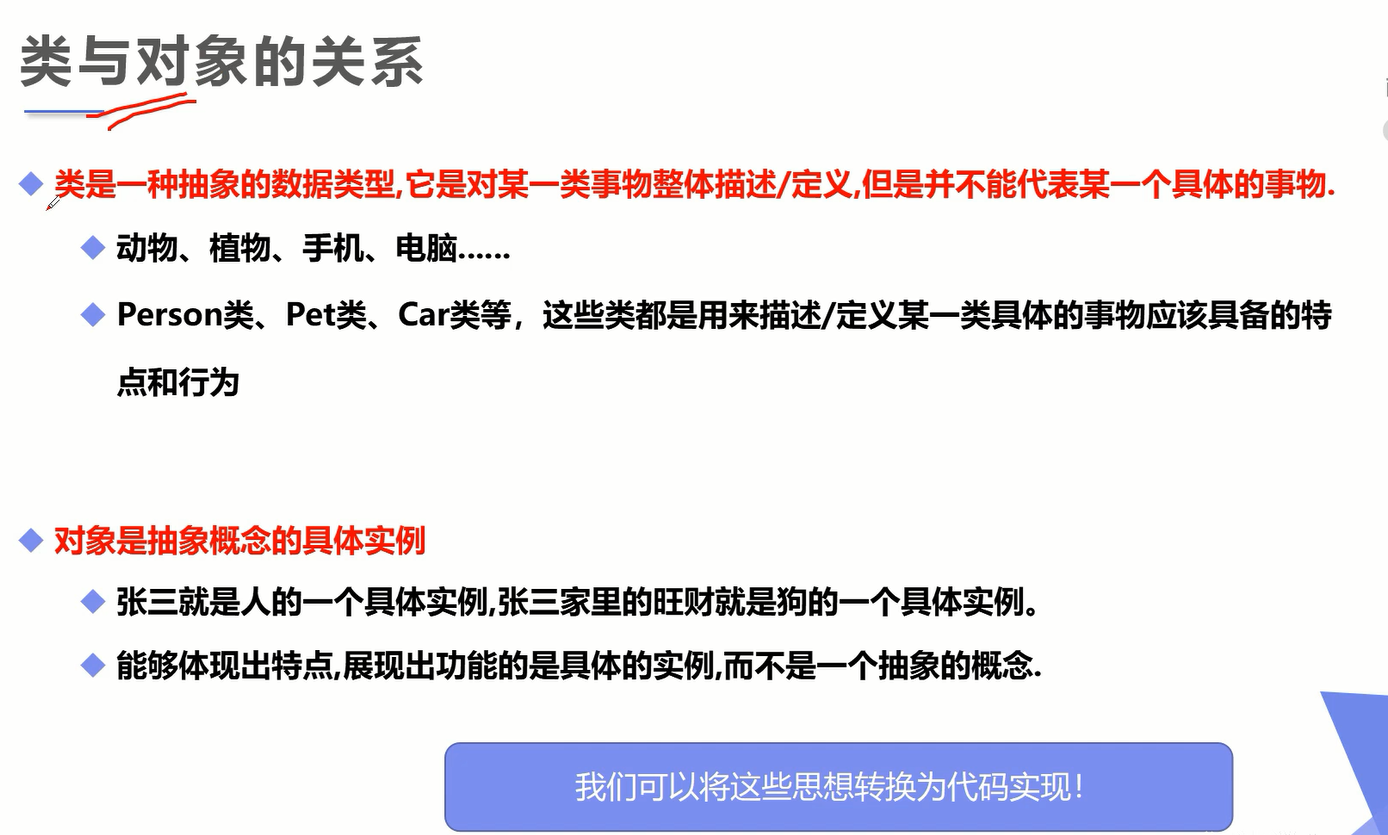
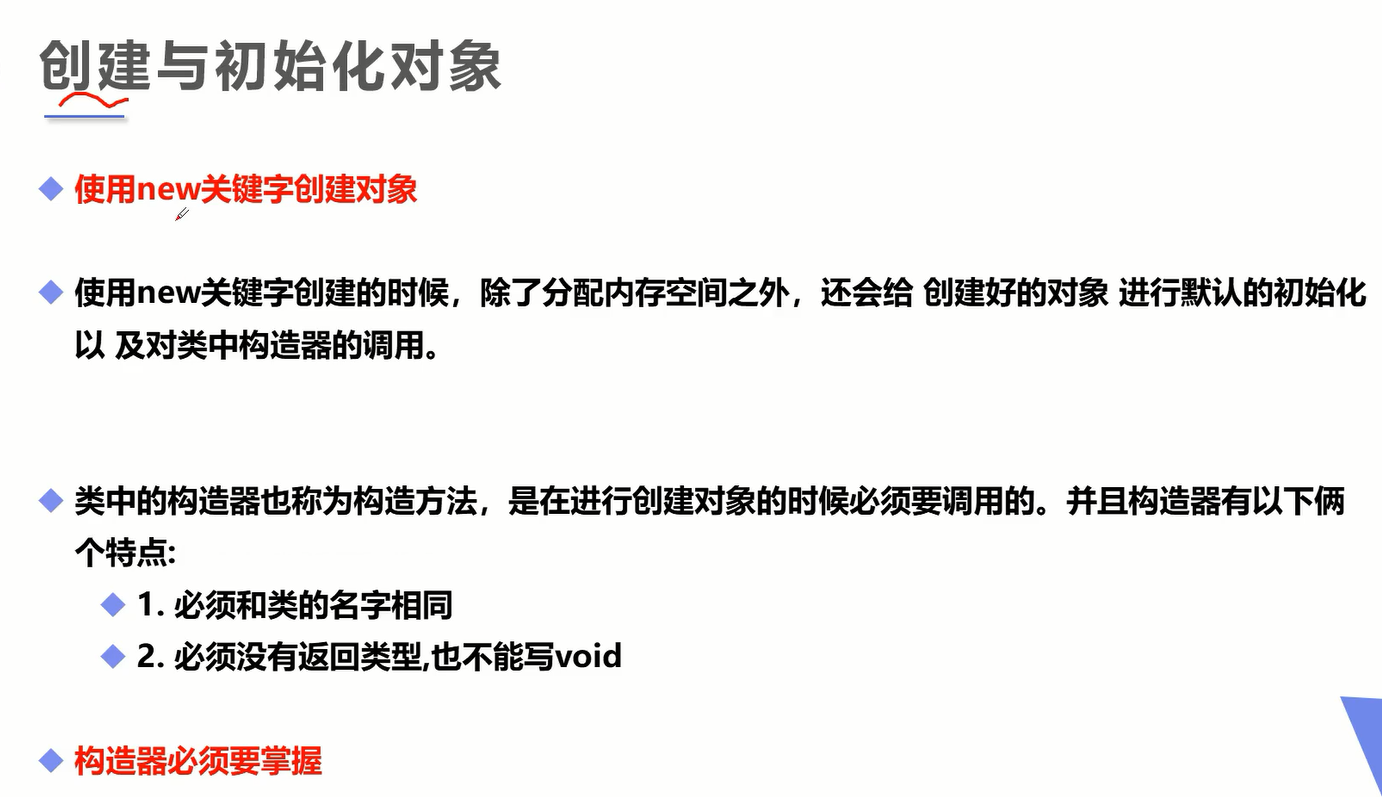
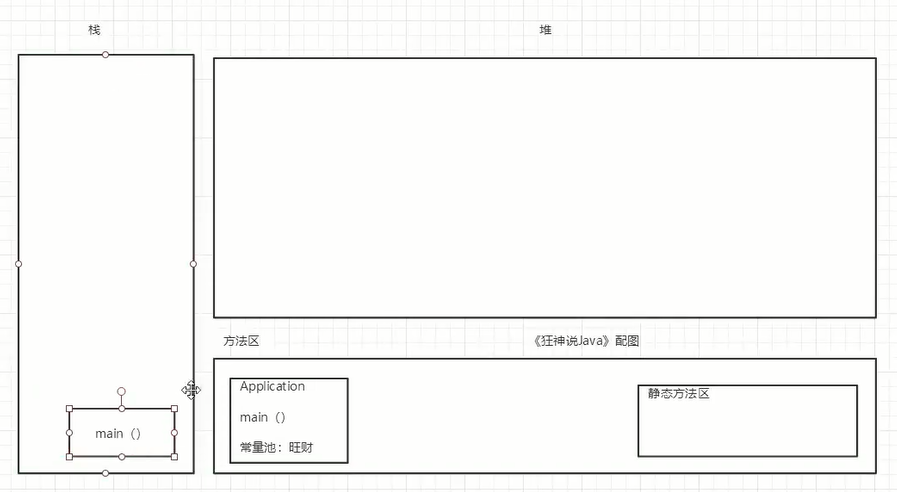


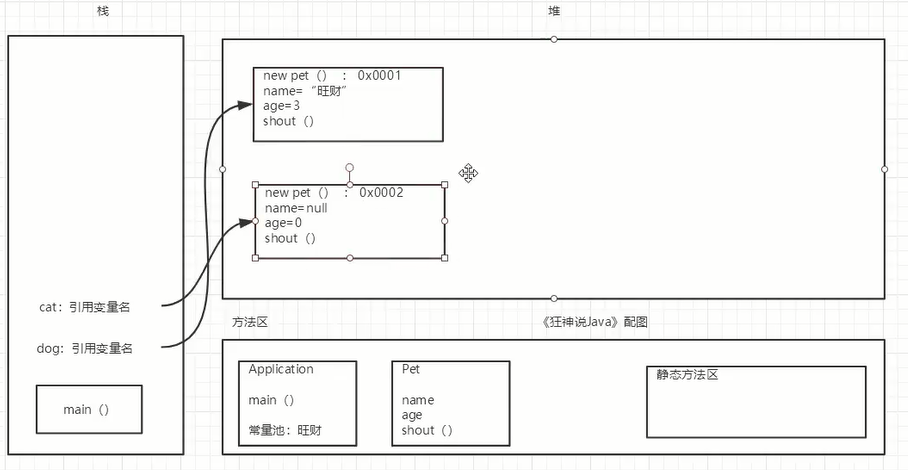
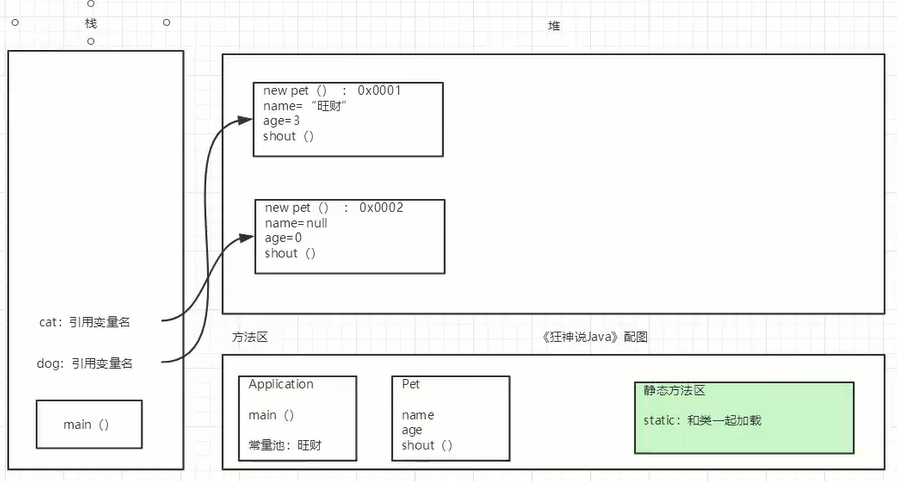

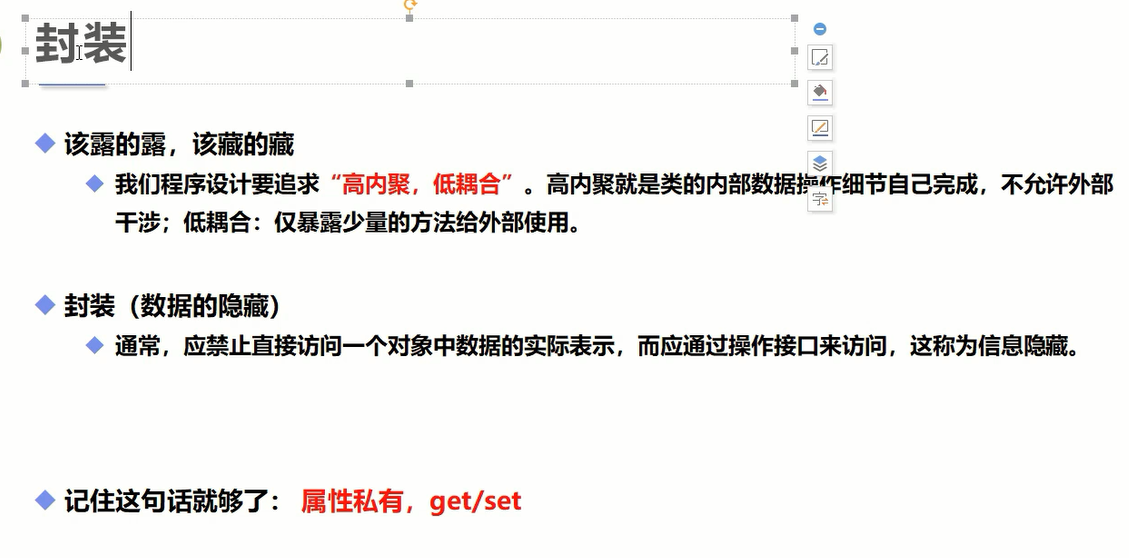

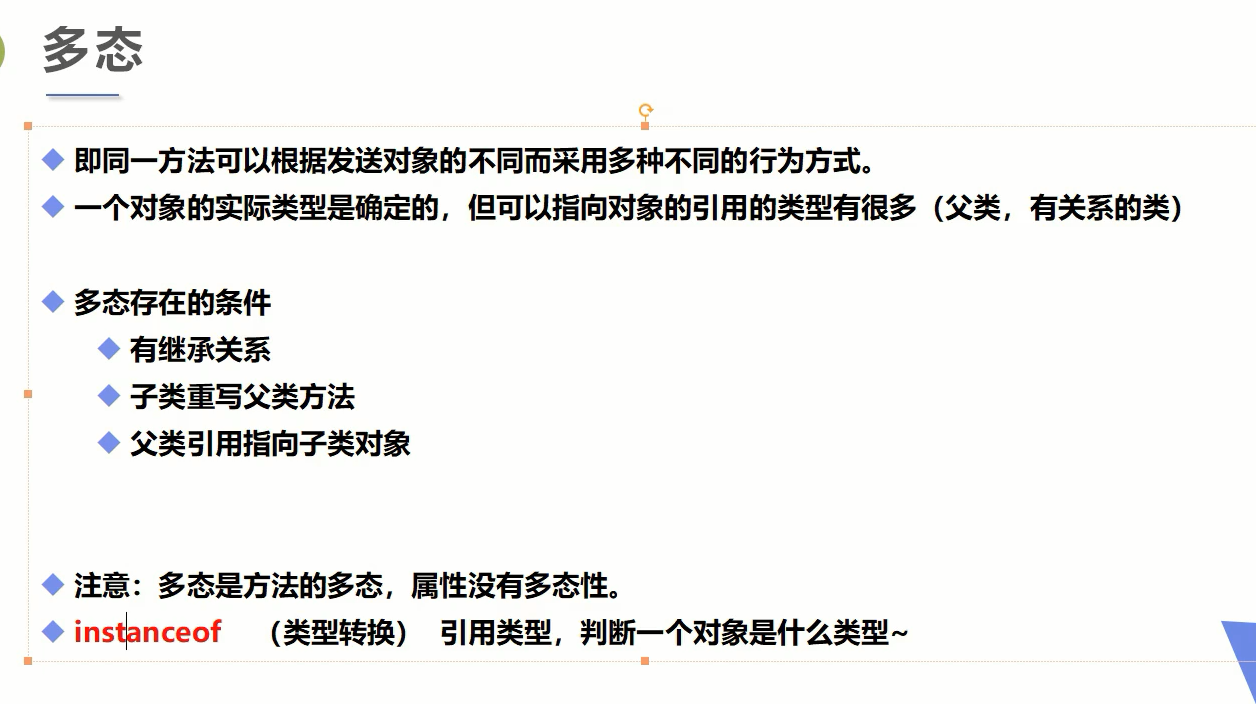
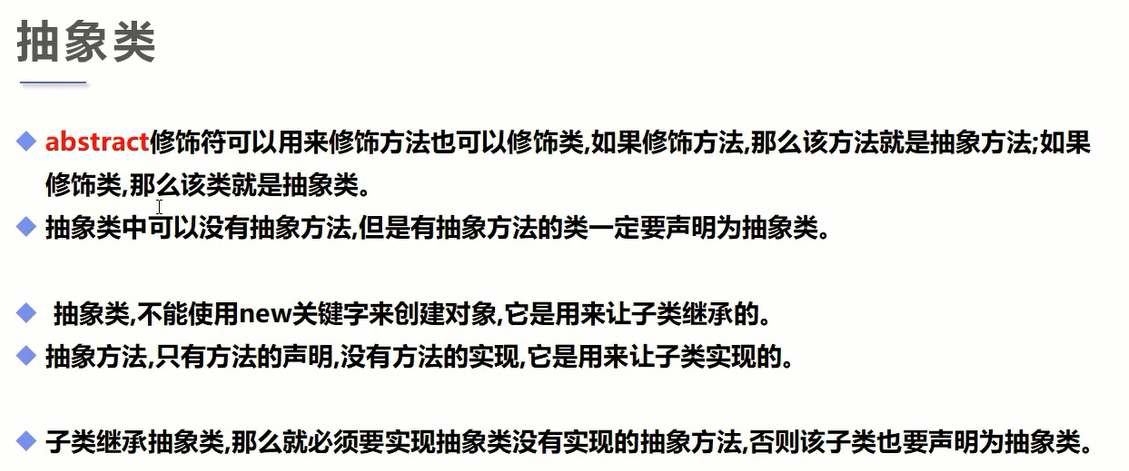
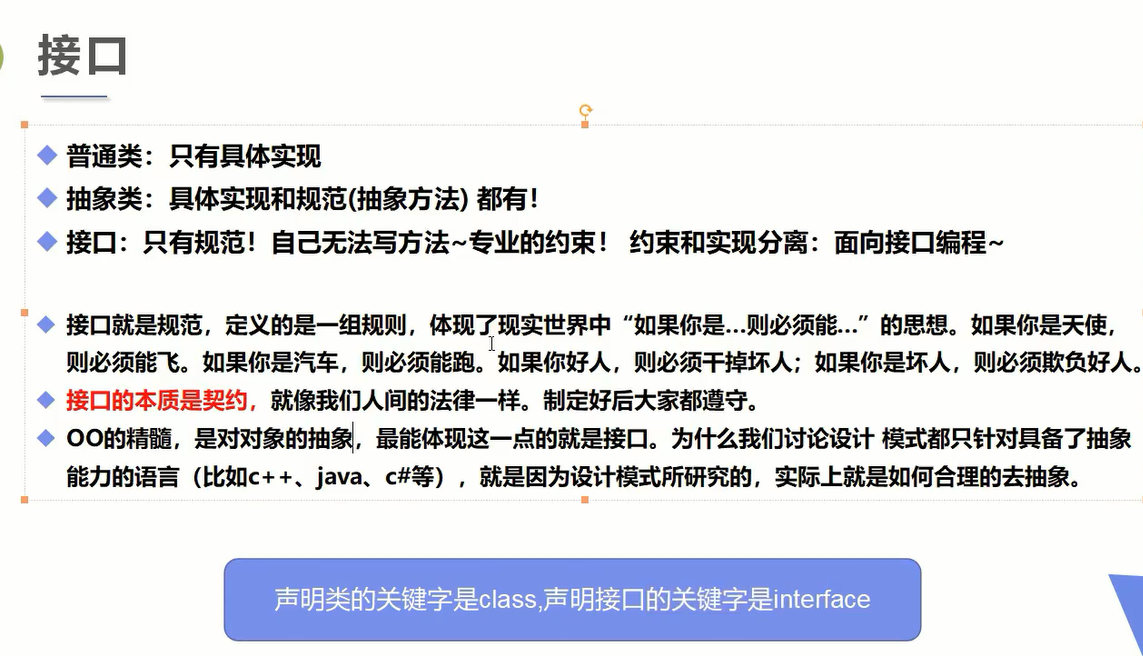
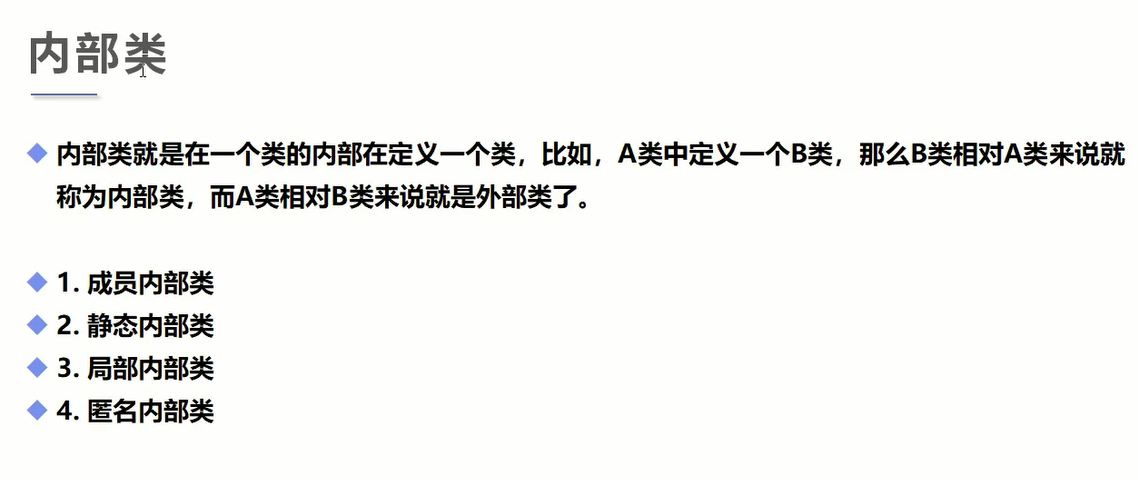




 浙公网安备 33010602011771号
浙公网安备 33010602011771号